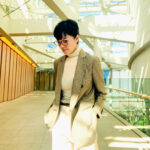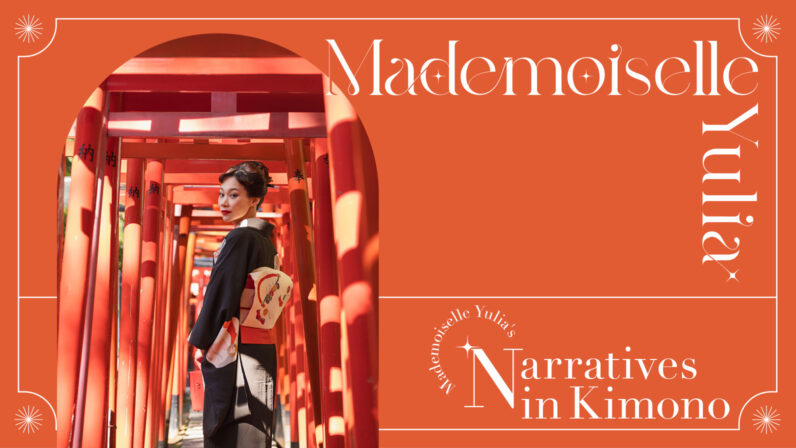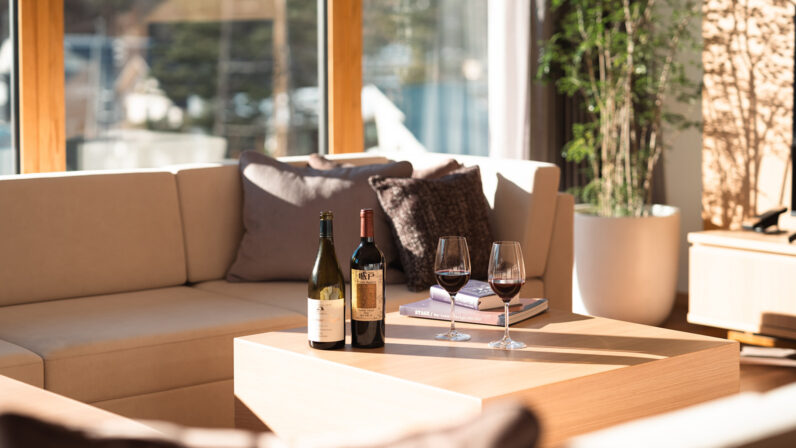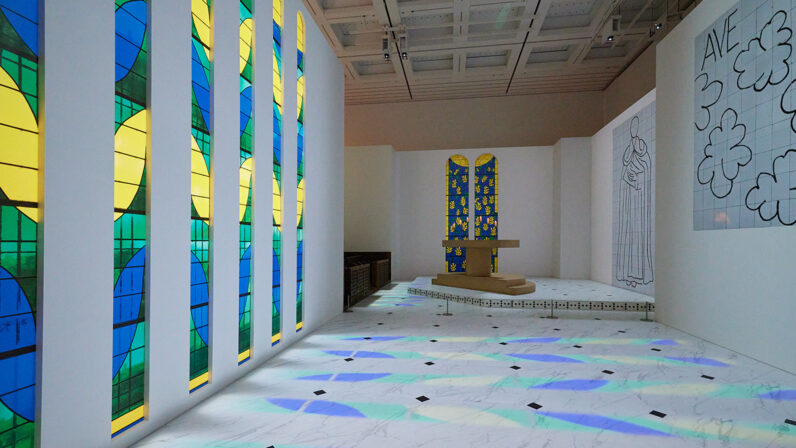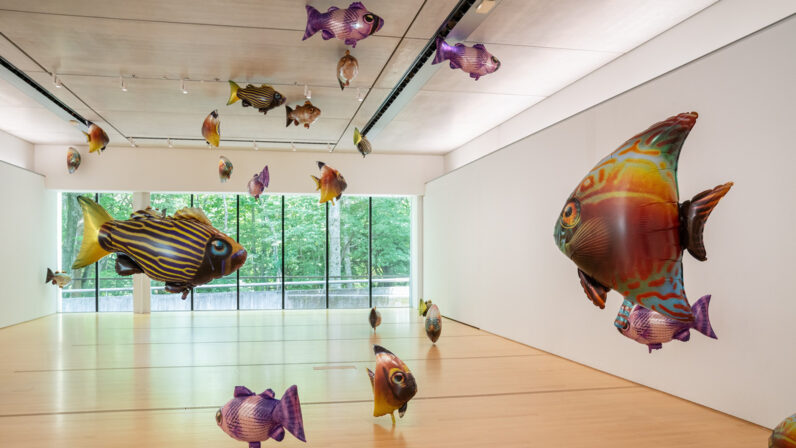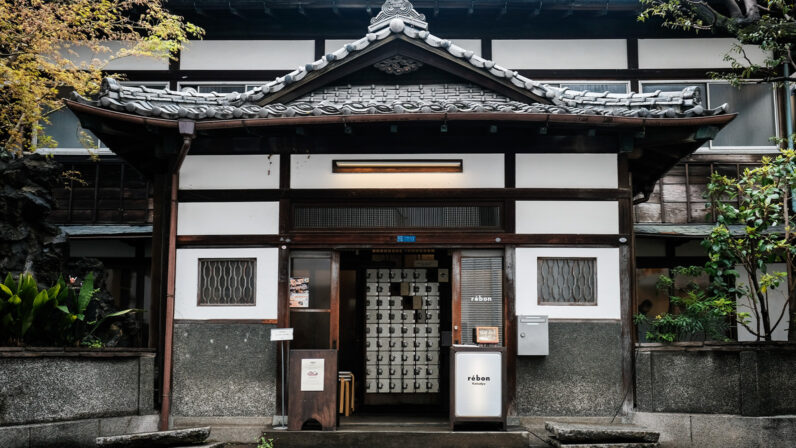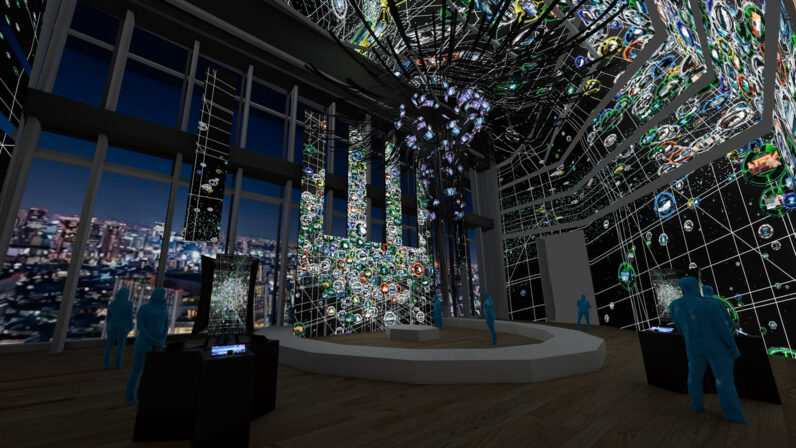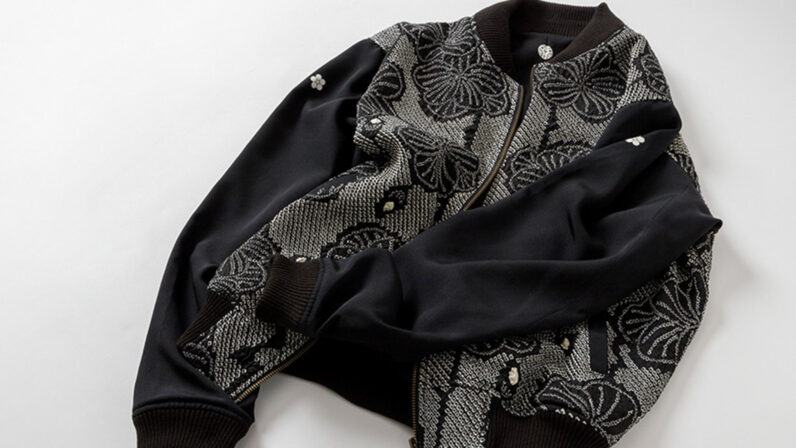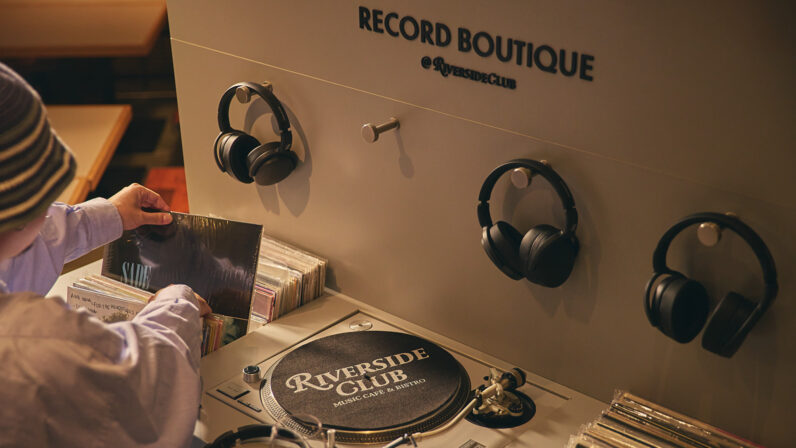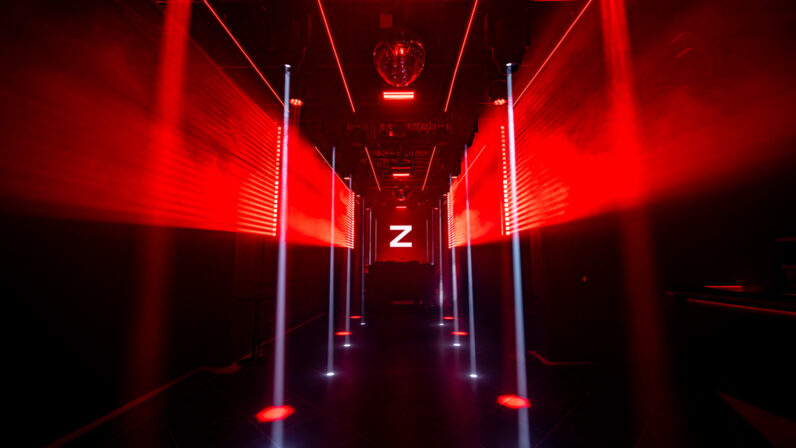Mademoiselle Yulia is a multifaceted talent—she is active in the fashion scene as a DJ while also producing her own kimonos. In this series, Yulia, who is well-versed in art and architecture, visits her favorite spots and discusses how she coordinates kimonos that harmonize with the surroundings. In the sixth installment, she visits the Panasonic Shiodome Museum of Art, tucked within a skyscraper. Surrounded by the refined beauty and innovation of Paris and the Belle Époque, Yulia, dressed in a kimono from the same era, adds an extra touch of glamor and elegance to the scene.

Yulia’s kimono stands out beautifully against the burgundy-toned space of the second chapter.
An Encounter with Paris’s Artistic Revolution
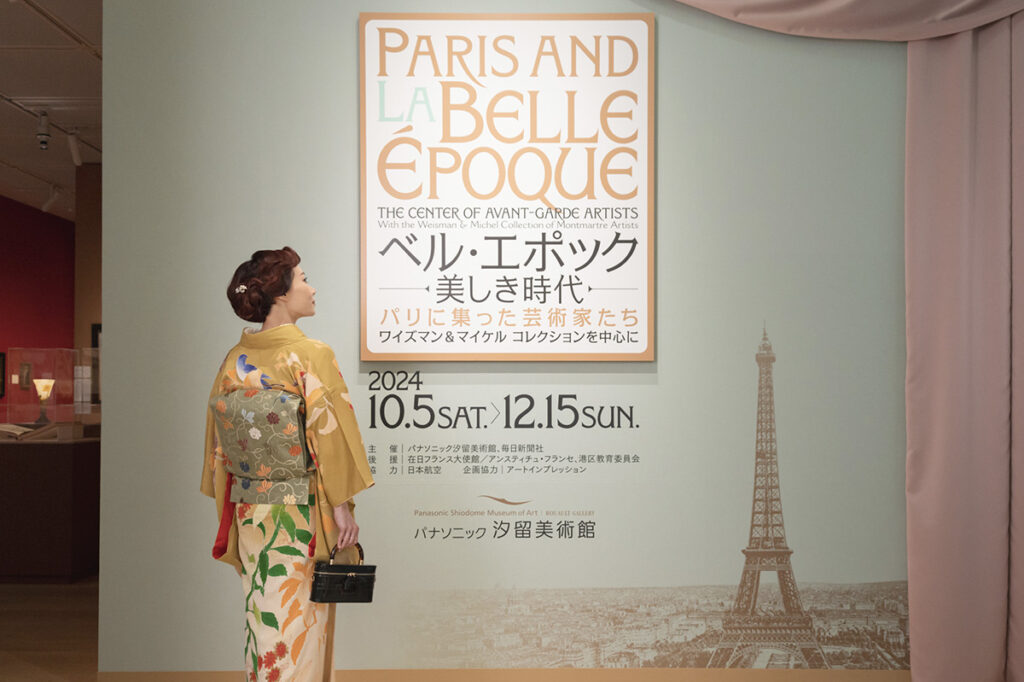
The entrance exudes a chic Parisian atmosphere with its mint green hue.
At the turn of the 19th to 20th century, as modernization gained momentum, Japan saw the blossoming of civilization alongside the influence of Western culture. Meanwhile, in Paris, the Belle Époque era sparked a surge of diverse artistic movements.
“I’m drawn to this energetic time when art and culture underwent transformative changes, embracing new influences,” says Yulia.
As she visits the exhibition she had eagerly anticipated, she wears an antique houmongi that exudes a dress-like elegance.
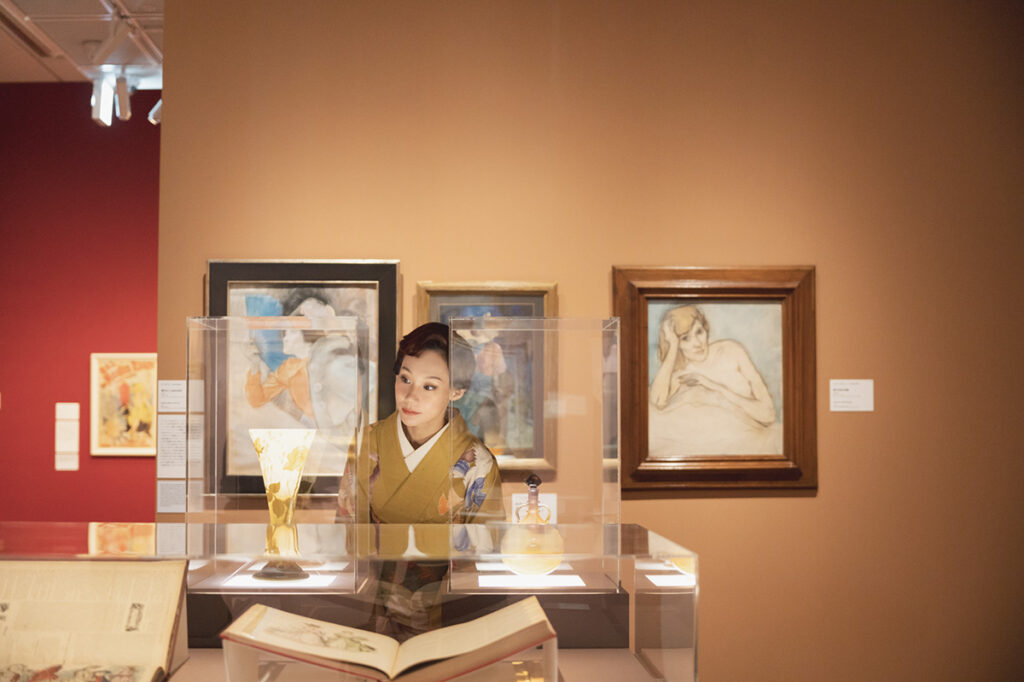
Beautiful glass works by artists like Émile Gallé and the Daum brothers exemplify this era.
The exhibition is divided into four chapters, each with its own unique design. While the artworks themselves are undoubtedly impressive, what truly stands out is the thoughtfully curated spaces, with every detail—from wall colors to lighting—perfectly matched to each section. In the first chapter, fashion and paintings born in the heart of old Paris are elegantly displayed against dusty pink walls. The second chapter brings to life the interactions of artists who gathered in Montmartre, featuring letters, as well as paintings and posters of cafés and cabarets. This dramatic wine-red space encapsulates the movement that brought art, once a privilege of the bourgeoisie, into the realm of the middle class.
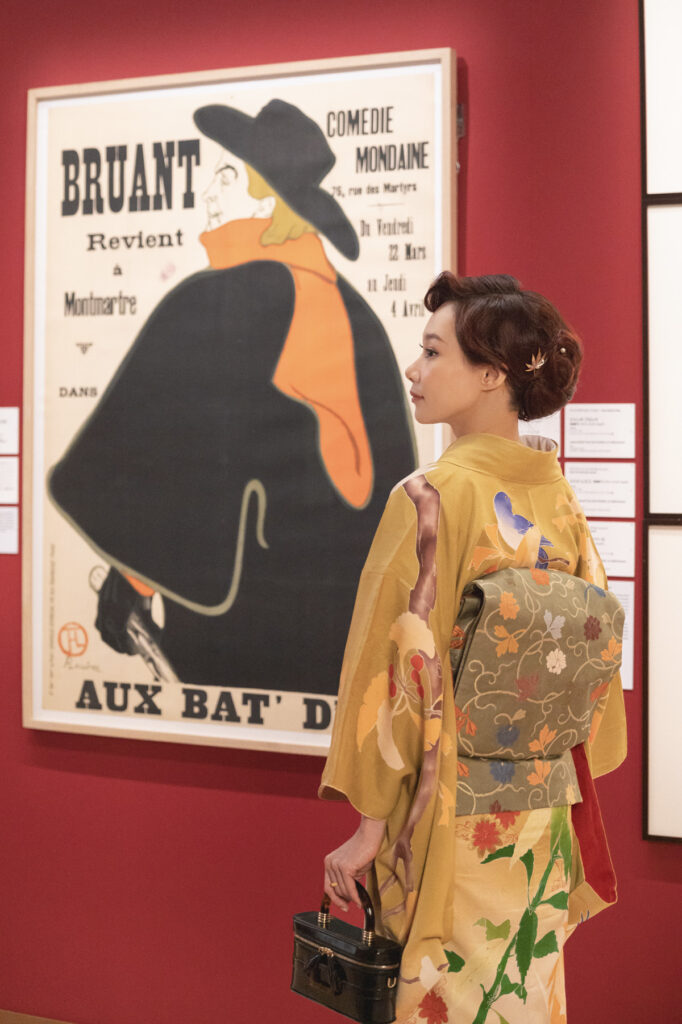
The poster, which serves as the main visual for the exhibition, radiates a graceful presence, with Yulia’s silhouette adding an air of refinement and beauty.


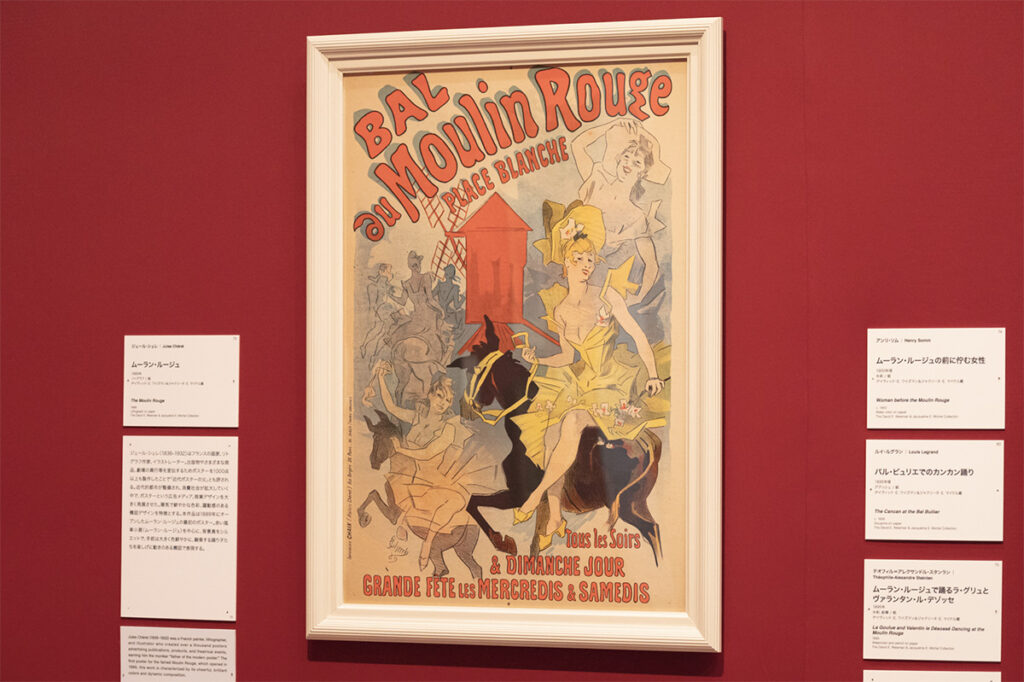
1st Image: The burgundy wall seems to capture the passion of Paris from that era.
2nd Image: “When I visit Paris, I always make sure to stop by the Rodin Museum,” says Yulia, as she thoughtfully gazes at the bronze ‘Portrait bust of Victor Hugo.’
3rd Image : Jules Chéret ‘The Moulin Rouge‘ 1889, The David E. Weisman & Jacqueline E. Michel Collection, © Christopher Fay
In the third chapter, theatrical posters that helped establish Montmartre as the entertainment hub of the era stand out vividly against dark blue walls. The space is filled with the enchanting imagery of a fantastical circus and the ecstatic expressions of popular dancers.

The rhythm of the dancers makes it feel as though elegant music is playing in the background.
The fourth chapter, which focuses on ‘A New Day For Women,’ presents works displayed against mint green walls. Among them is Sarah Bernhardt, the iconic actress of the Belle Époque, who appears as a muse for many artists. Not only was she a subject of art, but she also played a key role in connecting artists. Additionally, Yulia is captivated by the works of René Lalique, a symbol of the Belle Époque. Mesmerized by a showcase, she says, “The brooch designs are so superb. They would easily make the perfect obi clasps” as her imagination runs wild, taking in the intricate details.

René Lalique crafted the headdress designed by Alphonse Mucha for Sarah Bernhardt. With its delicate yet extravagant craftsmanship, Yulia is naturally captivated by its beauty.
A vintage kimono adorned with bold and vibrant autumn motifs

The huge advertisement in the underground concourse highlights the main attractions of the exhibition.
For the Paris and La Belle Époque exhibition, Yulia wore a houmongi featuring bold colors and dynamic floral and bird motifs, a piece from the Taisho period that aligns with the Belle Époque era.
“Since I visited the museum at the end of October, I chose a design that evokes autumn. The abstract silhouettes of ginkgo trees and other plants remind me of Art Nouveau. The vibrant lapis lazuli colors also have a distinctly Western feel.”
She added a seasonal touch with a crimson obi cord and a hairpin featuring a grapevine motif, capturing the essence of Autumn fading.


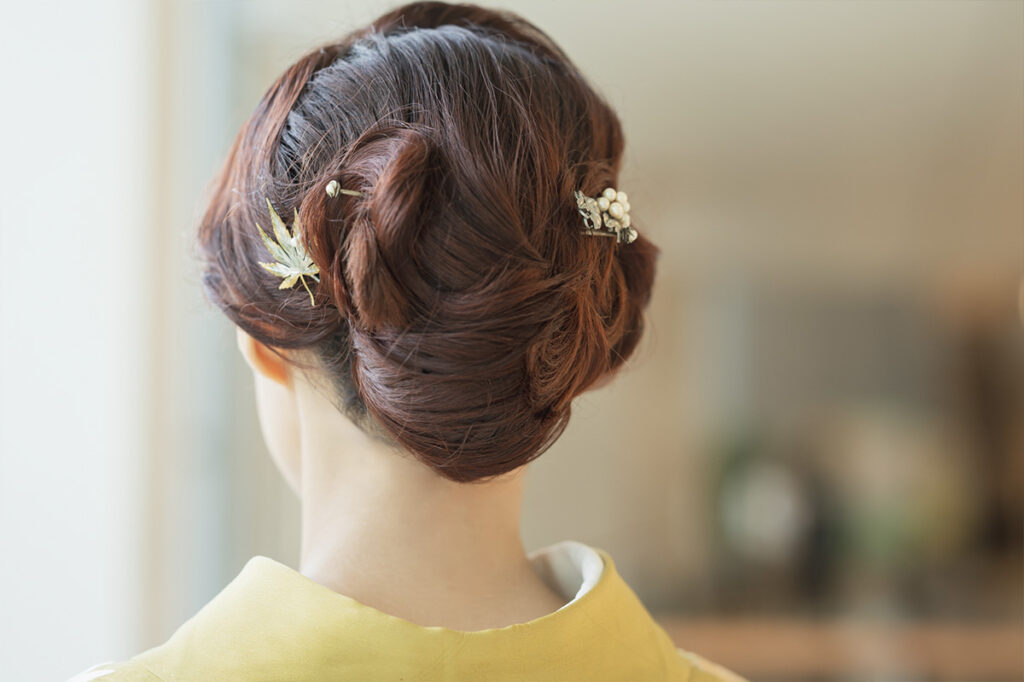
The graceful, flowing lines of the peony arabesque woven into the obi also evoke the mood of Art Nouveau.
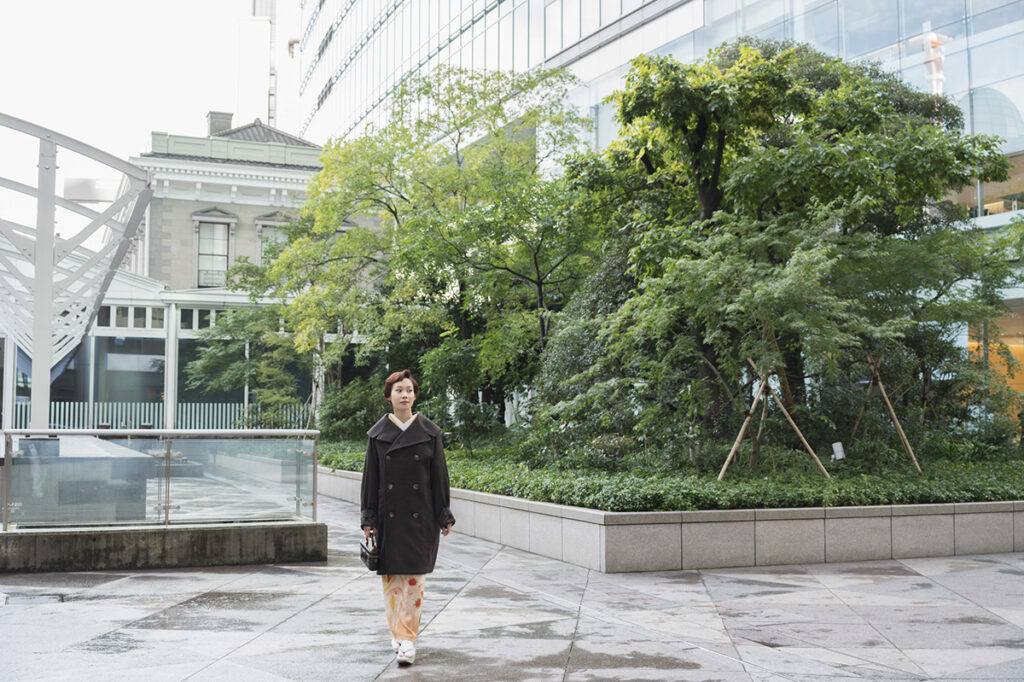
The sophisticated cashmere coat is a two-way design from KOTOWA, a brand that Yulia co-designs with a friend.
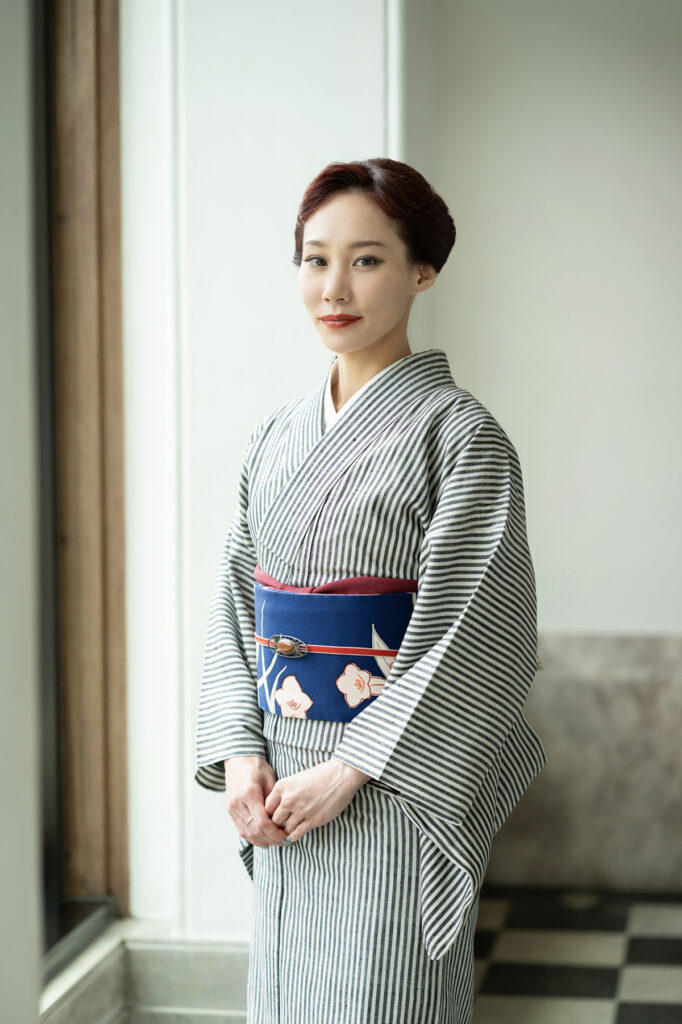
Mademoiselle Yulia
She began her career as a DJ and singer in her teens. Based in Tokyo, Mademoiselle Yulia is actively engaged globally, organizing kimono styling sessions, kimono workshops, and writing columns. In 2023, she co-founded the brand KOTOWA with friends to add stylish flair to everyday wear by incorporating kimono. She also runs a YouTube channel called ‘Yulia’s Room’ where she uploads new content every week.
instagram: @MADEMOISELLE_YULIA
The location featured:
Panasonic Shiodome Museum of Art: Paris and La Belle Époque – The Center of Avant-Garde Artists, With the Weisman & Michel Collection of Montmartre Artists Exhibition
Address: 1-5-1 Higashi-Shimbashi, Minato-ku, Tokyo, Shiodome Building 4th Floor Exhibition Official URL: https://panasonic.co.jp/ew/museum/

